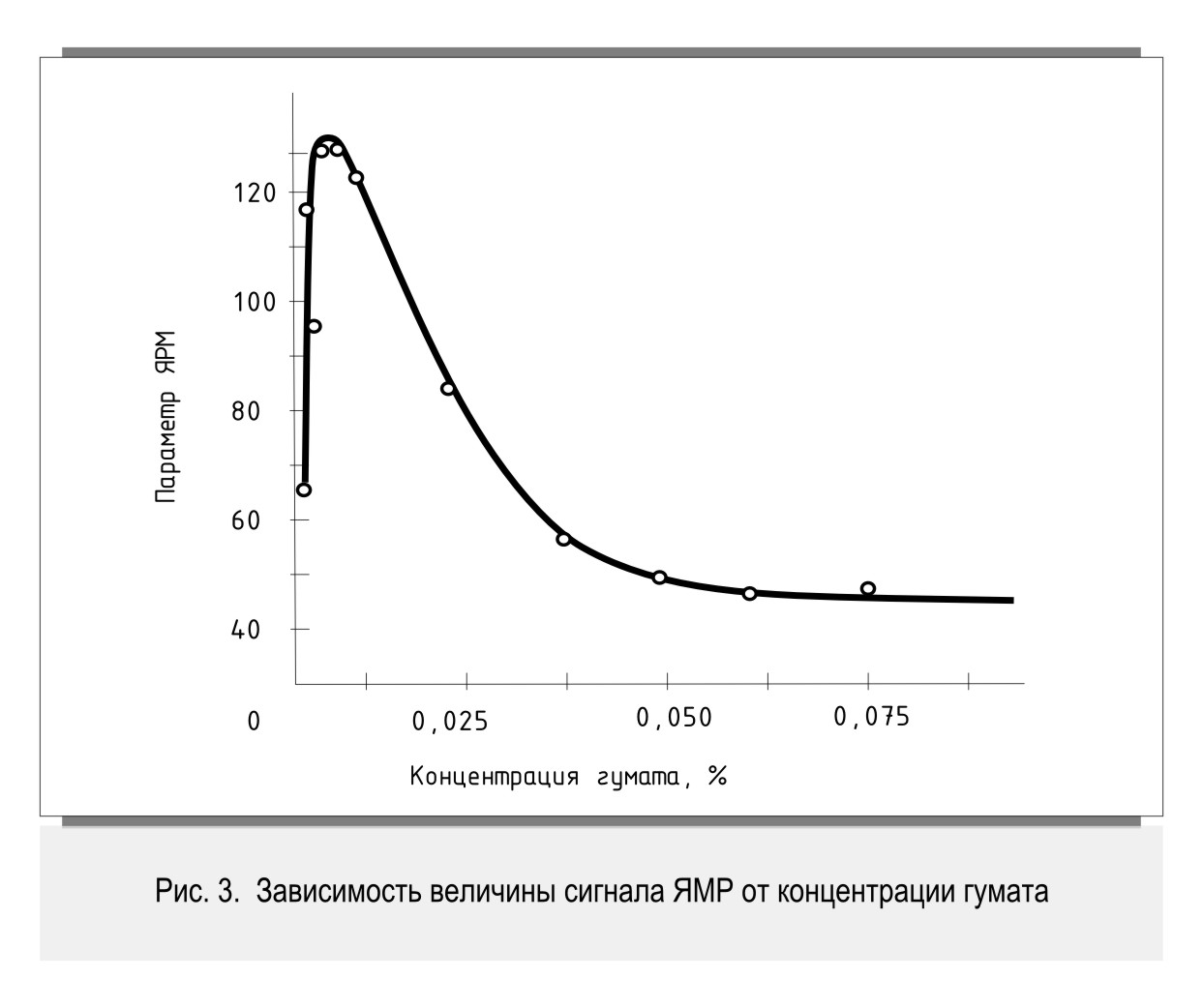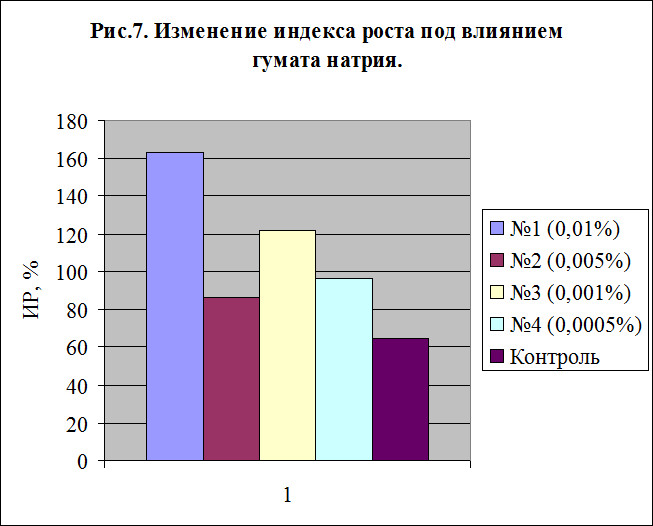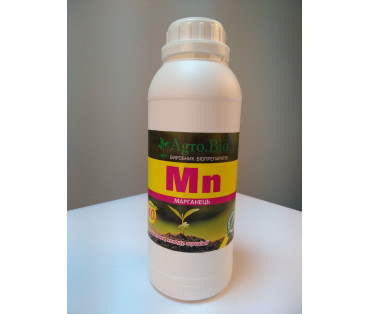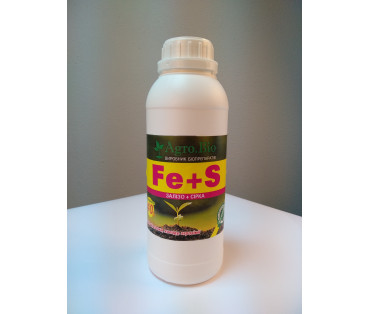Mechanism of humates formation and action
In the previous section, we reported approximate values of the ranges of humic substances molecular weights according to R.T.Pettit. In fact, humic acids are substances of very complex composition, consisting of separate interconnected fragments. The hypothetical structural formula of such a fragment is shown in Fig. 2

Fig.2 A possible structural formula of the humic acid fragment
The most complete representation of the structure of these compounds is given by D.A. Knyazev with co-authors in research article. Based on the Schulte-Schnitzer model, the authors found that the monomer (fragment) of humic acid has the general formula C305H299N16O134S with a molecular weight of 6364. The formula comprises 26 carboxyl groups (COOH), 34 phenolic and OH groups, 6 amino groups (NH2) as well as 7 heterocyclic nitrogen atoms. The molecule may contain from 2 to 15 such fragments formed in a chain with hydrocarbon or chemical bonds, which are naturally convolved in a conglobulation. These conglobulations form large aggregates that form an organic part of the soil. The size of such aggregates reaches 150 Angstroms, which prevents them from penetrating through the cell membrane. Therefore, in natural conditions, only a small part of the humus substances - crumbs of molecules' fragments, formed as a result of chemical reactions in the soil solution or under the action of microorganisms, can enter the cell and act as a plants growth and development stimulator.
In addition, in natural caustobioliths HA are in a localized state. They enter into organomineral complexes, forming insoluble compounds with Ca, Mg, Fe, Al and other mineral constituents. Their molecules are practically insoluble and immobile, and functional groups are blocked, which does not allow the HA to get active fully in the soil, peat fertilizers and ameliorant.
Due to poor water solubility, the biological activity of natural humic acids is very low, this is why to ensure the soil fertility the humus content in it should be quite large, as, for example, in the famous blackearths in the south of Russia. Treatment of natural humic compounds with alkaline agents transfer them into water-soluble salts – sodic or potassic humates according to the scheme:

From this scheme it is clear that after such treatment as a result of artificial replacement of metal (calcium, magnesium, iron, aluminum, etc.) on sodium (potassium) the chemical nature of humic acid and its conformation change. Functional groups, as a result of further dissociation, acquire similar electric charge, and parts of the molecule, pushing against each other, unfold a conglobulation in a long chain. As a result, the conglobulation unfolds and the chain is already able to flow through the cell membrane and get inside the cell. This leads to an increase of the biological activity of humic acid molecules in thousands of times.
Each functional group shown in the fragment (Fig. 2) performs its own role, and the number of such groups is very large, therefore the influence of humates on all stages of plants growth and development is multifaceted.
For example, carboxyl (COOH) and phenolic (OH) groups are capable to form chelate complexes with trace elements and in this way transfer them to plants, they also provide a high exchange capacity of humic acids. Other groups, called quinones (CO = C6H4 = OC), contain non-localized electrons that can capture, accumulate, and then transfer to the plant cell a solar energy, thereby increasing its energy.
These two specific examples illustrate only certain aspects of humates biological activity. An important factor is not only by the existence of functional groups, but also by their mutual arrangement.
Analyzing the results of studies made by various scientists, we were able to draw up a 16 factors scheme of humates influence on the ecosystem "water - plant - soil" (see Fig.3 and Table 3). Each of these factors independently of others leads to a certain positive result, which ultimately promotes the increase of yields, the enhance of nutritional value and environmental cleanliness of the fruits, accelerates the growth, development and ripening of the fruits, increases resistance to diseases, weeds, pests, drought, frosts and other adverse environment.
Let's start this scheme examination with the simplest "humate-water" system. The water solution of humate is a nutrient medium for plants, but the interaction of humate with water is far from been limited with this obvious fact. It is determined (see below) that humates when dissolved in water provides the "meltwater" properties to a solution, which is known to have high permeability and curative effect on living organisms. For example, American farmers argue that the introduction of meltwater in the diet of swines accelerates their growth and brings "one steak per day from each pig". Note that water in our body tissues also has the structure of "meltwater". Meltwater can promote the transfer of hydrated humate molecules to plant cells. In literature sources, a number of important positive functions of meltwater are noted, among which the functions of immune system stimulation and, as a consequence, the mobilization of the organism protective properties.
In order to understand what new water structure is being discussed, the dependence on the concentration of the HA relaxation characteristics of water on the spectra NMR О17 in the system HA-NaOH-D2O was established at Irkutsk State University. At the level of relatively high concentrations – 0.025% and above – the values of this parameter are close to the value for the source water, but with a decrease in the concentration of humate, this parameter sharply increases, passing through the maximum at a point that corresponds to the concentration of humate 0.0004% (Fig. 4). In the range of 0.0002-0.005% concentrations, the amplification of the NMR signal from 52.7 to 103 Hz was noted, that is, in this interval the growth of the values of this parameter significantly exceeds the initial value. Probably, in this range of concentrations there is a maximum effect of water molecules on the change of the supramolecular structure of humic acids, or, in other words, on the change in the molecular mobility of individual components and the polydispersity degree of humic acids molecules. Since the dependence of the NMR signals on water temperature in the range from 0 to the boiling point has a similar peak in the 40C area, which corresponds to the maximum molecules structuring, we can assume that the humate solution in the indicated concentration range undergoes through aqueous matrix structuring, which results in the effect of meltwater obtaining. In our opinion, this is a very important result, which matches the string of logic substantiating the best possible concentration of humate solution in plants cells and intercellular plasma.

NMR parameter. Humate concentration. Fig.3 Dependence of the NMR signal value on the humate concentration.
It emerged that the easiest way to determine the role of water structuring in the presence of humates at the very first stage of plants development – during seeds soaking and sprouting. The test objects were viable seeds of peas Pisum sativum L with low Vigor (control similarity 16.7%). The upswelling of the seeds was carried out in Petri dishes in a thermostat at 240C in the dark. The upswelling rate was determined by the weight method after 3, 4, 6 and 24 hours. Swollen seeds were sprouted in rolls of absorbent paper in the same conditions. Considering the number of normally sprouted seeds in 5 days, the germinative capacity in % to the total amount of seeds and the germinative power (based on the number of seeds sprouted on the second day) were calculated. After 5 days term the length of the main embryonic roots was measured. All experiments were carried out with triple repeatable accuracy (20 seeds in each). We have proved that water structuring leads to a slower process of seed upswelling, since structured meltwater polymers, due to steric (spatial) effects, slowly penetrate into the seeds, providing a gentle upswelling treatment and preventing cell membrane rupture (Fig. 7, curve 1). As a result, in this range of concentrations seeds germinate faster (curve 2). In this case, both curves have a clearly expressed extremum at a concentration of 0.001%.
Table 3 Factors and result of the humates influence on the ecosystem "water - plant - soil"
|
An object |
Impact factors |
Impact result |
|
Water |
Structuring of water in the dissolution of humate in it: formation of meltwater. Increase of water molecules penetrating ability into the cell and intercellular plasma Binding of harmful impurities and purification of water and atmospheric environment from pollution |
Immune system stimulation, organism protective functions mobilization, increase of resistance to stress and adverse factors of climatic, atmospheric and soil influence. Improving of transfer of nutrients to plant cells, increasing of water saturation and water retention in the plant, reducing of water consumption needed for normal plant development Water purity increasing and eliminating the flow of harmful substances into the plant, neutralizing harmful substances coming with moisture from the atmosphere |
|
Plant |
Transfer of solar energy quanta to a cell accumulated by humate: growth of cell energy: intensification of metabolic processes, acceleration of respiration, increase of nutrient intake to the plant, acceleration of nucleic acids and protein synthesis, activation of protein and carbohydrate metabolism, improvement of biochemical composition of plants Permeability of cell membrane increase: acceleration of respiration, facilitation of nutrients penetration inside the cell, improvement of potassium and other nutrition elements absorption.
Neutralization of toxic ions and free radicals in the plant |
Accelerating the evocation, increasing the seeds germination readiness. Development of the root system. Acceleration of growth, development and ripening of plants, stimulation of flowering, fruiting, fruit afterripening, increase of croppers yields. Increase of the content of sugars, vitamins, chlorophyll, oils, gluten (in wheat). Enhance of resistance to stress of various nature and adverse factors (frost, drought, solar radiation, etc.). Preservation of yield when deviating from optimal conditions of development. Reducing the formation of nitrates. Intensification of reparation processes in damaged plants (accelerating the recovery of cells damaged by pesticides, harmful substances and pathogenic organisms). Intensification of the consumption of moisture and carbon dioxide contained in the atmosphere. Increase the intensity of germination, growth, development and ripening of plants
Enhancing the ecological purity of fruits |
|
Soil |
Pigmenting in dark color Gleyification: water binding, increasing of nutrients concentration in gel, increasing of their diffusion speed through the gel Formation of organic linkers: improving the soil consistency, increasing its porosity and the strength of particle adhesion Stimulation of microbiological activity of terricolous microorganisms Growth of the soil exchange capacity Formation of chelate complexes Localization of iron and aluminum ions Neutralization of heavy metal and radionuclides ions Neutralization of poisons, acceleration of pesticides decay Improvement of fertilizers absorption, synergistic effect when used jointly with plant protection products and growth regulators: cost reduction, efficiency improvement |
Increase of soil temperature, improvement of cultivation conditions and increase of soil microorganisms activity, acceleration of the seeds evocation and plants germination Growth of water saturation and water retention in soil. Increasing the availability of nutrients for plants. Improving plant nutrition. Reducing of water consumption for soil moisture maintaining when watering and plant nutrition. Increasing the soil water saturation. Increase of oxygen content in the soil, acceleration of root respiration, which leads to an intensity increase in plant growth and development. Improvement of conditions for bacteria and soil-forming organisms' development that accelerate the accumulation of humus. Improvement of soil fertility. The humus formation process intensification and, as a consequence, increasing of soil fertility. Decomposition of pesticides and other poisons in the soil and reducing their transfer into plants Inhibiting (suppressing) of plants growth and development prevention. Enhancing the ecological purity of fruits. Intensification and regulation of mineral nutrition components transfer processes in the "soil-plant" system. Increase the intensity of germination, growth, development and ripening of plants. Transfer of minor-nutrient element to the plants and improvement of their nutrition. Increasing the yield and nutritive value of the fruits. Increasing of the absorption of phosphorus by plants. Reducing the phosphate fertilizer consumption. Protection of plants from industrial emissions, ensuring the environmental cleanliness of the fruits. Neutralization of plants growth and development inhibition, reduction of nitrate content, increase of soil and fruit ecological purity Improvement of soil structure and fertility, reduction of nitrate content, increase of soil and fruits ecological cleanness, acceleration of germination, growth, development and ripening, increase of yield |

Upswelling. The main embryonic root length, cm
Fig.5 Influence of sodic humate concentration on upswelling and germination of peas seeds. 1 – Upswelling in % to the original mass in 6 hours time, 2 Length of the embryonic roots in 5 days, cm
This is well illustrated on figure 7, which shows the dependence of the growth index on the concentration of humate in solution. In the diagram shown, we see that this dependence passes through the maximum at a concentration of 0.001%, which corresponds to a minimum of upswelling and maximum of germination, but with further growth of concentration increases again. Consequently, at the stage of growth, the predominant role has the dose of humate, but not its concentration.

Fig. 6. Change in the growth index of pea sprouts depending on the concentration of sodic humate
It is also determined that humates localize harmful impurities (Ca, Fe, Al, etc.) present in water and thus can be used to purify water from contamination and to block their transferring into a plant both from the soil and from the atmosphere (acid rains, atmospheric emissions, etc.).
In the system of "humate-plant" two independent phenomena having great importance are noted.
The first phenomenon is the growth of cell energy and the associated intensification of metabolic processes. The quinone-type groups in the humic acid molecule have four linked pi bond, the electrons of which are capable of capturing the solar energy quantum with the transition to a higher energy level. The accumulated solar energy can then be transferred to the plant cell at the right moment, which leads to the intensification of metabolic processes. When comparing the paramagnetic properties and the physiological activity of humic acids, it is determined that photoenergy takes an active, and possibly also resolute, importance in the formation of the energy potential, composition and physical and chemical properties of humus. Electromagnetic radiation induces paramagnetism and humic acids stimulating effect. Thus, special experiments on cotton plant, vegetable and grain cultures showed that humic acids with high paramagnetism at solution concentrations of 0.001 - 0.01% most strongly stimulate plant growth and development.
Our experiments on the effects of certain types of fields on humates led to similar results. The transfer of energy accumulated by humic acid to plant cell accelerates the evocation and germination of the seeds, the development of the root system, stimulates growth, activates the protein and carbohydrate metabolism, and improves the biochemical composition of plants by creating special enzymes. These enzymes increase the resistance of plants to adverse environmental factors and stresses, such as drought, frostbites, diseases, and other, and promote the development of such areas of nitrogen absorption process that reduce the formation of nitrates. At the same time the synthesis of chlorophyll, sugars, vitamins, essential amino acids, oils accelerates, increases the content of gluten in wheat, etc. There is an intensification of the reparative processes in damaged plants (acceleration of the recovery of cells damaged by pesticides, harmful substances and pathogenic organisms). Respiration through the vegetative and root systems intensifies.
However, there is still no complete clarity in which way this accumulated energy is transferred to the cell, since there is not enough evidence of the intake of whole HA macromolecules within the cell. However, with the help of "tagged" carbon it is proved that the highest HA concentration is accumulated in cell membranes and bioplasts (cell organelles) such as mitochondrion and Paladeses granule (R. Pettit, 1999). Other similar experiments with the use of marked humic acids with tagged carbon showed that low molecular weight fractions of HA are more active than high-molecular ones.
An interesting hypothesis was developed relatively recently. The authors proposed an explanation of the mechanism of humic substances action on the living cell, which does not require assumptions about the transfer of HA molecules into its internal environment. According to their hypothesis, HA macromolecules are sorbed on the outside of the cytoplasm membrane or cell wall, forming a cellular reticulum, and freely pass into the cell the elements of mineral nutrition and low molecular weight organic compounds such as sugars or amino acids and simultaneously localize toxic ions and free radicals of the environment.
In this case, the energy profit from the use of HA is expressed in reducing of the cells metabolic cost for elimination of toxins negative effects and increasing of consumed crop products environmental cleanliness is expressed in blocking the flow of toxins into the plant and their conversion into localized inactive state. Liberated energy may be targeted at increasing the intensity of cell fission, which causes accelerated growth of plants. The growth of cell energy also leads to improved assimilation of nutrients, which in particular results in a reduction of nitrates content in fruits by more than 50%. That is, there is a direct relation between the growth of cell energy with the consumption of humates and the improvement in the cell absorption of nutrient elements coming to it.
The second phenomenon is an increase in the permeability of the cell membrane, which accelerates the respiration of plants, facilitates the income of nutrients within the cell and, ultimately, leads to an increase of plants growth and development intensity. In addition, there is a direct relation between the intensity of respiration and the penetration of mineral nutrition elements in plants, which leads to a synergistic effect.
HA simultaneously affect both hydrophilic (having congeniality for water), and hydrophobic (moisture-repellant) areas on the surface of cell membranes. At the same time, HA replace the electric charge on their phospholipid components. As a result of these electrical changes in the surface of the membrane, it becomes more active for transferring of trace elements and other nutrients within the cellular cytoplasm.
It is important to note that this phenomenon is quite optional. For example, the permeability of potassium ion increases by a factor of 102 (100 times), and sodium only by an order of magnitude greater (10 times), which positively affects the nutrition of plants.
Based on the theory of three consecutive stages of mineral nutrition transfer from soil to plant, it is shown that the first two stages are activated mainly in potassic humate the potassium cation plays the role of the structure-forming unit), and the third stage – in the sodic humate (sodium cations carry the transporting function). It follows that the mixture of potassic and sodic humates is the best possible.
The cited work also shows that the passage of the second stage of mineral nutrition absorption by the plant is associated with respiration. When cells absorb oxygen the hydrogen cations and bicarbonate anions (HCO3-) are released into the soil solution. They are an exchange fund for absorption of soil ions by the root system. Therefore, there is a direct relation between the increase in the intensity of respiration caused by humates, and the improvement of mineral nutrition elements penetration in plants.
The "humate - soil" system has a particularly large variety of phenomena. Soil fertility has long been associated with the presence of humus in it. It has been established that humic substances are involved in the regulation of practically all of its most important properties. They form a darker color of the soil, thereby increasing the coefficient of sunlight absorption. For countries with a cold and temperate climate, the ability of humate to paint the soil in dark color is essential. Forming the color, humates change the heat regime. This is especially important for cold clayey and light sandy soils, which, under the influence of humates, become warmer. It improves the living conditions of soil microorganisms, evocation of seeds, germination of plants and their growth in the early stages of development.
The colloidal structure of humic acids and high hydrophilicity of functional end groups give them the ability for gleyification. This explains the repeatedly noted increase in the soil moisture retention after treatment with humates. This circumstance is extremely important for arid regions, since treatment with humates increases water saturation of the soil and reduces the amount of water needed for irrigation. For example, under the influence of humates the moisture-retaining ability of sandy soils increases by more than ten times. On the same principles, the use of humates as ameliorants is based.
Prolonged treatment with humates contributes to the improvement of soil structure. Above, an important role of the humates interaction with metals has been noted, which leads to the formation of complexes or insoluble salts. It turned out that this process is important not only for the nutrition of plants, but also for the structuring of soils. Getting into the soil, humates, reacting with calcium, magnesium, aluminum and iron, always present in the soil, form organomineral linkers connecting mechanical particles of soils to a structure that can withstand erosion and entrain of the fertile layer with winds, to retain moisture and air, to create a favorable environment for the life of microorganisms and increase the soil fertility.
Humates in the soil – are the pantry storing the reserve of nutrients that are given to the plant as it needs them.
Humates form insoluble compounds with heavy metals (lead, mercury, chromium, cadmium, etc.), which penetration into fruits, and then in the human or animals body leads to serious diseases, and thus create an obstacle to their penetration into the plant's cell. Satellite photography has determined that in regions where soils are rich with humic acids, it is possible to maintain ecological balance, despite intensive man-made burden. Of great significance is the ability of humates to localize the iron and aluminum ions in complexes, whose excessive amounts in the soil have a pernicious effect on plant nutrition with phosphorus. In this case, iron forms complexes with humates, which ensure its transfer to plants, and aluminum binds to an insoluble compound, and thus its harmful effect on phosphates is neutralized.
The interaction of humates with soil minerals, soil aggregates, soil moisture and soil bacterial flora is so diverse that these issues we will discuss further in our following articles.
Read the continuation of an article
Related Products
Humate + Silicon (Si) «Agro.Bio»
Humate + Silicon (Si) + "Agro.Bio" is a liquid complex mineral fertilizer containing a large amount of silicon and other trace elements in an accessible, chelated form.Silicon fertilizer Hum..
$14.00
Humat + Manganese «Agro.Bio»
Humat + Manganese of Agro.Bio ™ production - monochelatos, organic fertilizers, bezbalastnoe with leonardite, growth stimulants that provide complex nutrition for plants, in concentrated form, water-s..
$9.00
Humate + Iron + Sulfur «Agro.Bio»
Iron (Fe) is an important element in plant life, which is responsible for the biosynthesis of chlorophyll. According to its (Fe) participation, redox processes, processes of respiration and photosynth..
$11.00



